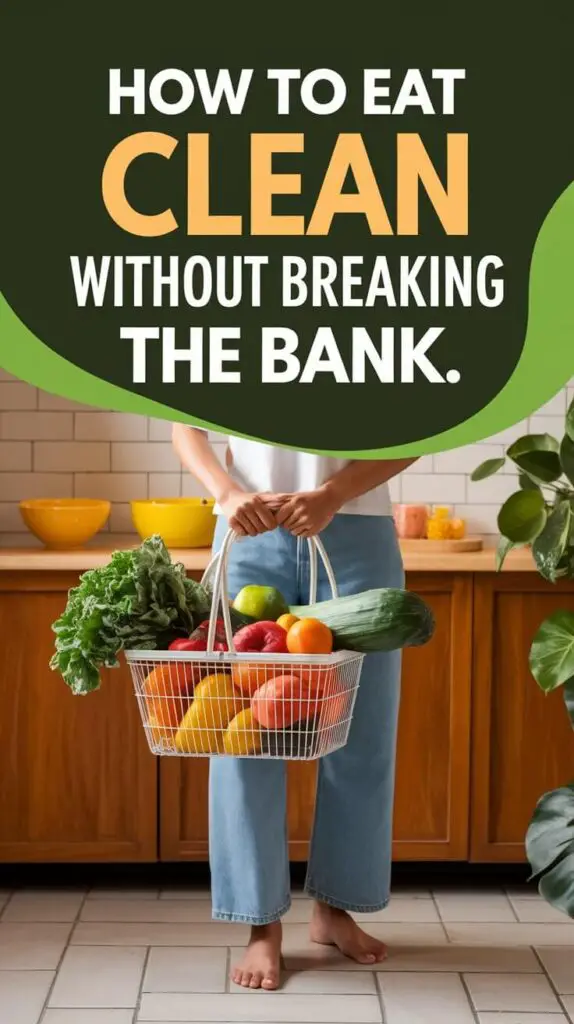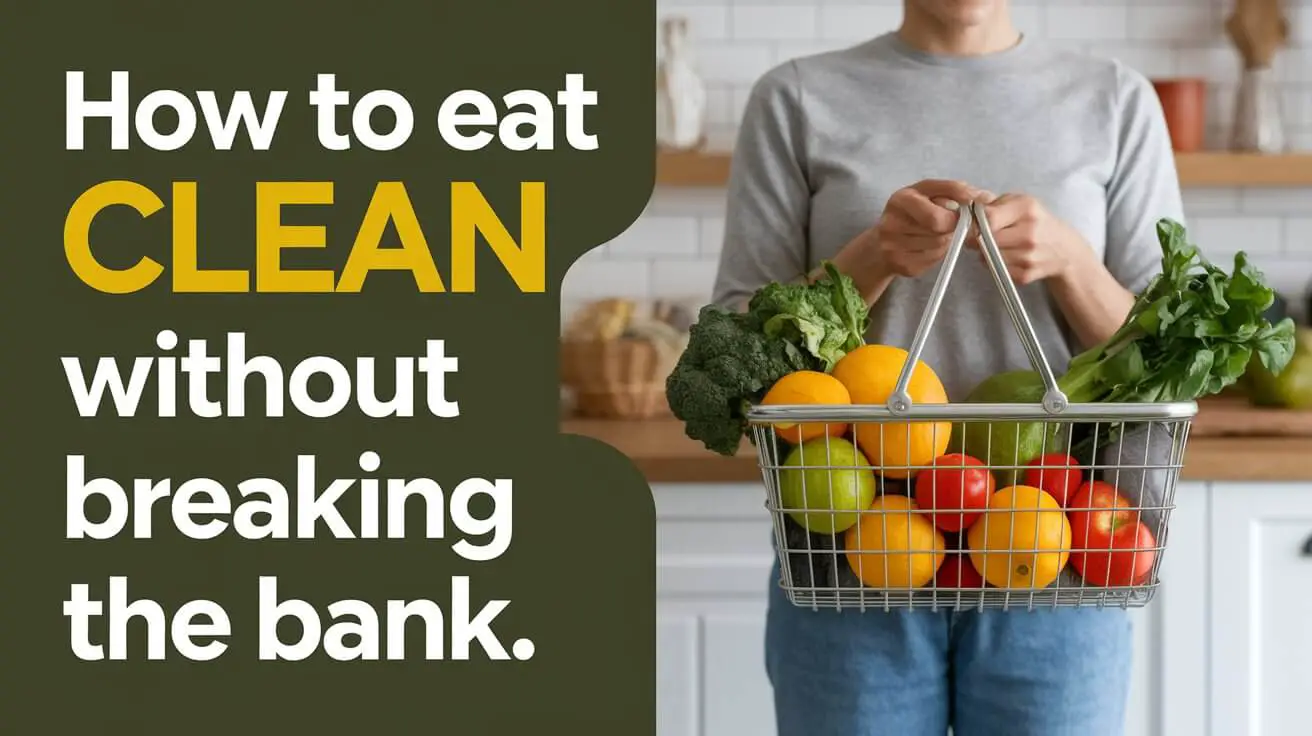Eating clean often feels like a luxury reserved for those with big budgets and access to fancy health stores. I used to think the same way. Every time I walked down the organic aisle, I found myself wondering how people could afford to eat like that every day. But over time, I realized that eating clean doesn’t have to mean spending a fortune. With a few smart strategies, I’ve managed to stick to a clean eating routine without emptying my wallet.

If you’re looking for ways to eat clean without breaking the bank, you’re not alone. Let me share some simple and practical tips that have helped me along the way.
What Does Eating Clean Mean?
Before jumping into how to save money, let’s break down what eating clean actually means. Clean eating is all about choosing whole, minimally processed foods that are as close to their natural state as possible. Think fresh fruits, vegetables, whole grains, lean proteins, and healthy fats. It’s not about following a strict diet but focusing on nourishing your body with quality foods.
When I first started, I thought clean eating meant buying everything organic and avoiding anything that came in a package. But I quickly learned that perfection isn’t the goal. It’s more about making better choices when you can.
Plan Ahead and Meal Prep
One of the biggest game-changers for me was planning my meals ahead of time. I used to buy random groceries without any idea of what I was going to cook. This often led to wasted food and impulse takeout orders. Now, I sit down once a week and plan out simple meals that use similar ingredients.
Meal prepping has saved me both time and money. On Sundays, I chop veggies, cook grains, and prepare proteins in bulk. This way, I have ready-to-eat meals during the week, which helps me avoid unnecessary grocery runs or fast food stops.
Shop Seasonally and Locally
Buying seasonal produce is another way to eat clean without breaking the bank. Seasonal fruits and vegetables are not only fresher but also cheaper. I’ve found that visiting local farmers’ markets or even smaller grocery stores often offers better deals than big supermarkets.
When certain fruits or vegetables are in season, I buy extra and freeze them for later. Frozen produce is just as nutritious as fresh, and it’s a great way to save money while keeping a variety of options on hand.
Focus on Whole Foods, Not Superfoods
It’s easy to get caught up in the trend of superfoods like goji berries, chia seeds, and spirulina. While they’re packed with nutrients, they can be expensive. I used to feel like I needed all these fancy ingredients to eat clean, but I soon realized that simple, affordable foods like oats, beans, and sweet potatoes are just as powerful.
Don’t overlook staples like brown rice, lentils, and canned tuna. They’re budget-friendly and can form the base of many nutritious meals. Eating clean doesn’t have to be complicated. Sometimes, the simplest foods provide the best nutrition.
Cook at Home More Often
Cooking at home has been one of the most effective ways to eat clean and save money. I used to eat out regularly because I thought healthy cooking required too much effort. But with practice, I found that simple meals like stir-fries, roasted vegetables, and grain bowls take very little time to prepare.
Cooking at home allows me to control the ingredients I use, avoiding unhealthy oils and excessive salt. Plus, I’ve learned to recreate some of my favorite takeout meals in a healthier way.
Buy in Bulk
Certain foods like grains, nuts, and legumes are much cheaper when bought in bulk. I often stock up on these items because they have a long shelf life and can be used in a variety of meals. Buying in bulk not only reduces the cost per serving but also minimizes the need for frequent grocery trips.
I keep glass jars or containers at home to store bulk items, which helps keep my pantry organized and reduces food waste.
Limit Processed Snacks and Drinks
One area where I used to spend more than necessary was on processed snacks and sugary drinks. They might seem convenient, but they add up quickly and aren’t always the healthiest choice. Now, I prepare my own snacks like trail mix, boiled eggs, or fruit slices.
By cutting back on sodas and packaged snacks, I’ve redirected that money toward buying more wholesome foods. It’s a small shift, but over time, it makes a big difference.
Grow Your Own Herbs and Vegetables
A few years ago, I started growing herbs on my kitchen windowsill. It started with just basil and mint, but I soon expanded to tomatoes and lettuce in small pots. Growing my own produce has been incredibly rewarding, and it’s a cost-effective way to add freshness to my meals.
Even if you don’t have a garden, small indoor plants or balcony pots can yield a surprising amount of food. Plus, homegrown produce often tastes better than store-bought versions.
Be Flexible and Use What You Have
I used to follow recipes to the letter, which often meant buying ingredients I didn’t use again. Now, I’ve learned to be more flexible. If a recipe calls for kale but I have spinach in the fridge, I make the swap. This reduces food waste and helps me make the most of what I already have.
Learning to cook based on what’s available has made me more creative in the kitchen. It’s a fun challenge and a great way to keep meals interesting without overspending.
Final Thoughts
Figuring out how to eat clean without breaking the bank doesn’t have to be overwhelming. It’s about making small, intentional choices that align with your budget and lifestyle. Through planning, cooking at home, and choosing simple, whole foods, I’ve found a way to prioritize my health without overspending.
Clean eating is a journey, not a destination. By starting small and being consistent, you’ll find that it becomes second nature over time. And in the end, nourishing your body doesn’t have to cost a fortune.
